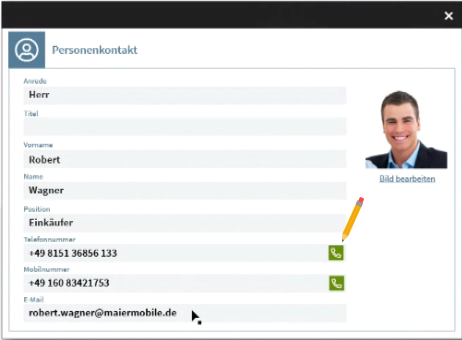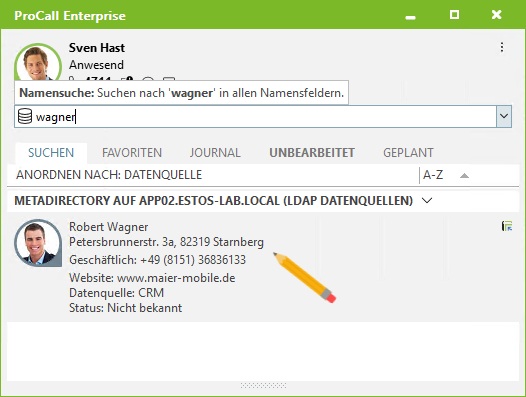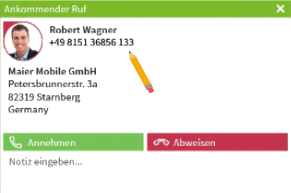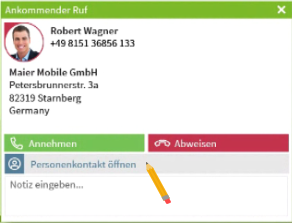Plan and implement business process integration/system integration in conjunction with estos products
April 2022
Simplification of business processes
The goal is to simplify business processes by linking applications without having to change them. The implementation of solutions in interaction with third-party applications such as CRM/ERP systems along processes is as individual for companies as are the requirements for integration.
In this respect, there is no (blanket) integration of a third-party application into our products!
In order to realize a business process integration, the system environment (third-party application) and the desired integration level must be considered in more detail and taken into account for both planning and effort assessment.
Determine level of integration
In preparation for an estimate of effort, we first assess the desired level of integration of CTI and unified communications for third-party applications based on four levels:
| Level of integration | What should be realized? | Example screenshot | Expenditure |
|---|---|---|---|
| Level 1 | Trigger phone call: A telephone call is triggered from a third-party application. |
| LOW EFFORT |
| Level 2 | Number resolution/contact search: A phone number resolution and a contact search should be possible based on the data from the third-party application. |
| MODERATE EFFORT |
| Level 3 | Parameterized call of a program or URL: A mask in the third-party application is opened using the call data and/or the data from the third-party application. |
| MODERATE TO HIGH EFFORT |
| Level 4 | Interaction via an interface (programming required): A mask in the third-party application is opened or filled using the call data and/or the data from the third-party application. |
| HIGH TO VERY HIGH EFFORT |
These four levels should not be seen rigidly and completely. If, for example, a dialing function is desired in level 1 and neither Microsoft TAPI nor the phone handler support is available in the third-party application, integration with our SDK may be possible under certain circumstances. However, this means that we are moving into level 4 in terms of effort.
So what does system integration mean in connection with estos products?
Example topology – overview of system integration: third-party application, ProCall Enterprise, MetaDirectory, replication of data, contact call, call from the application, search query
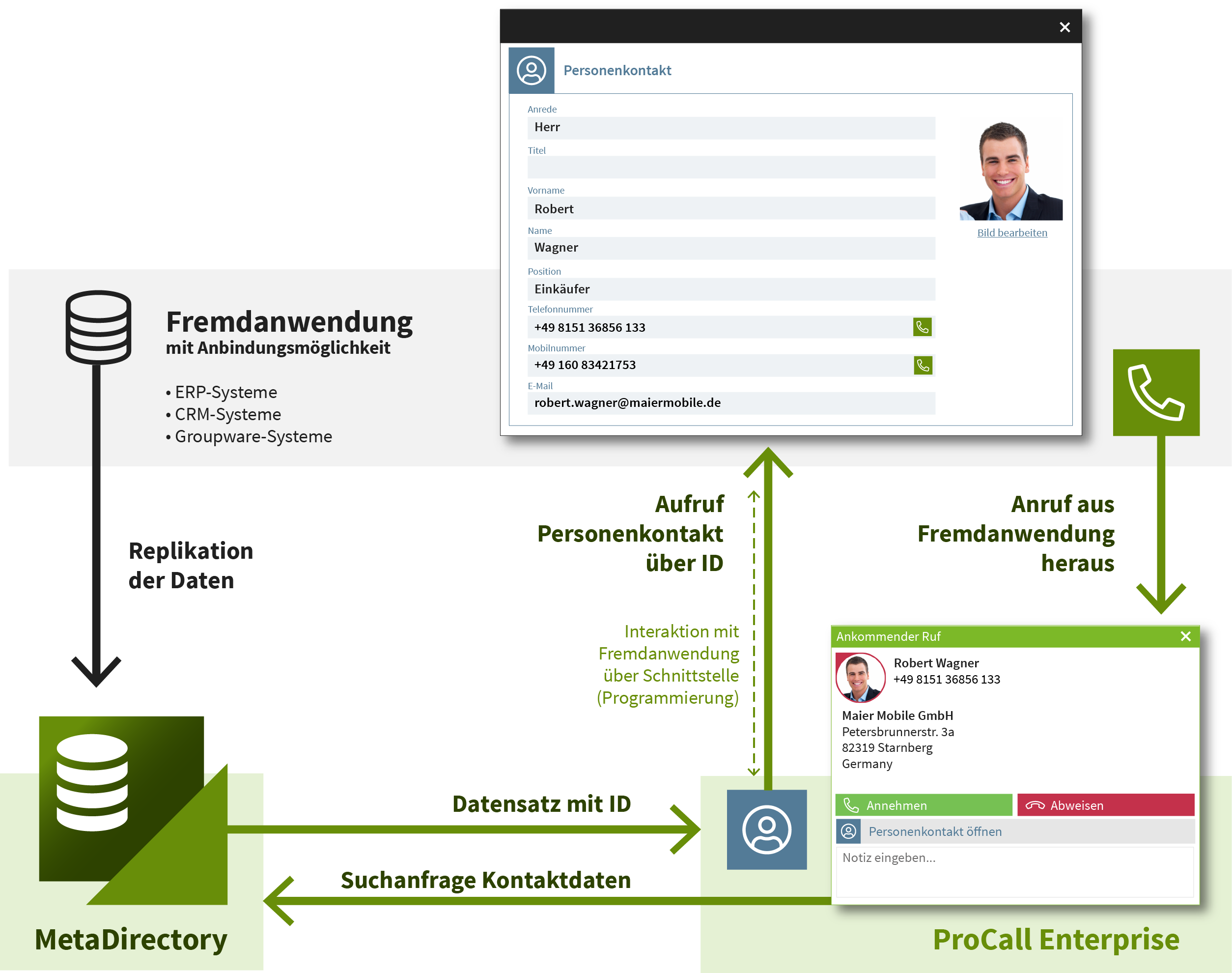
Implementation of the four levels
The System Integration Overview diagram illustrates the implementation of the four levels.
If the customer is only concerned with the implementation of level 1, it is limited to the arrow running vertically on the right.
Level 2 is about the left vertical arrow (replication of data) in connection with the horizontal arrows (data set with ID and search query contact data).
For level 3, the middle vertical arrow plays a role in addition to the arrows from level 3 (call person contact via ID). The dashed vertical arrow stands for level 4 (interaction with third-party application via interface (programming)).
The arrows signal communication and data flow via interfaces.
For the horizontal arrows, this is done via LDAP(S) and is not critical since our products communicate via it.
There is usually a need for individual clarification regarding the interfaces for the communication shown by vertical arrows in the diagram!
Ideally, in level 1, communication can take place via standard telephony application, Microsoft TAPI or a Tel-URI.
In level 2, it would be ideal if a dedicated replicator can be used to replicate the data from the third-party application.
If this is not the case, then it must be clarified to what extent a standard driver for ODBC is available, whether the database of the third-party application is open for access and whether the table structure is known.
Alternatively, access via LDAP or the use of a previously exported text file might be conceivable. Examples of third-party applications that can be connected can be found in the MetaDirectory 5 Enterprise specifications.
In level 3, it must be clarified whether and how the third-party application is to be controlled.
Ideally, this would be a parameterized call to the native application or a URL.
In level 4, interaction with an interface in the third-party application is necessary and means programming effort.
In both cases, it must also be clarified what is to be opened in the third-party application. The opening of a person contact is only to be understood as an example.
Conclusion
Basically, when it comes to system integration requests, it is necessary to clarify which level of integration is desired by the customer, which interface can be used here, and what specifically is to be implemented?
For an estimate of effort and the points to be clarified, it is possible to include, Technical support from estos or trained estos partners.
Further information
- Configure and customize call window
- Business process integration with cobra CRM PLUS
- Business process integration with Salesforce Lightning
